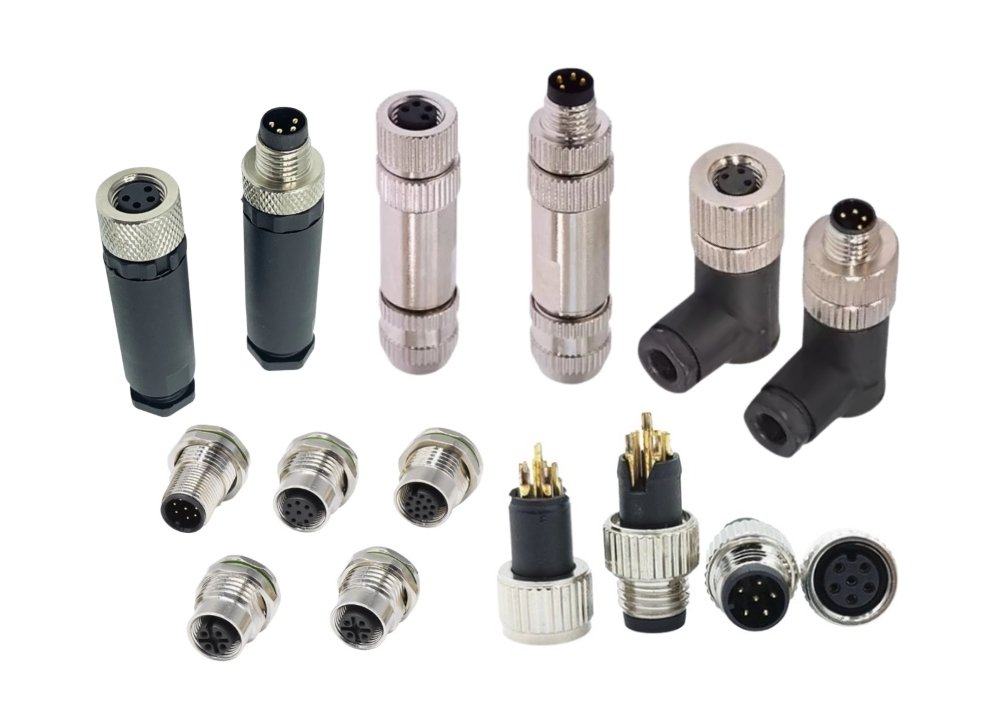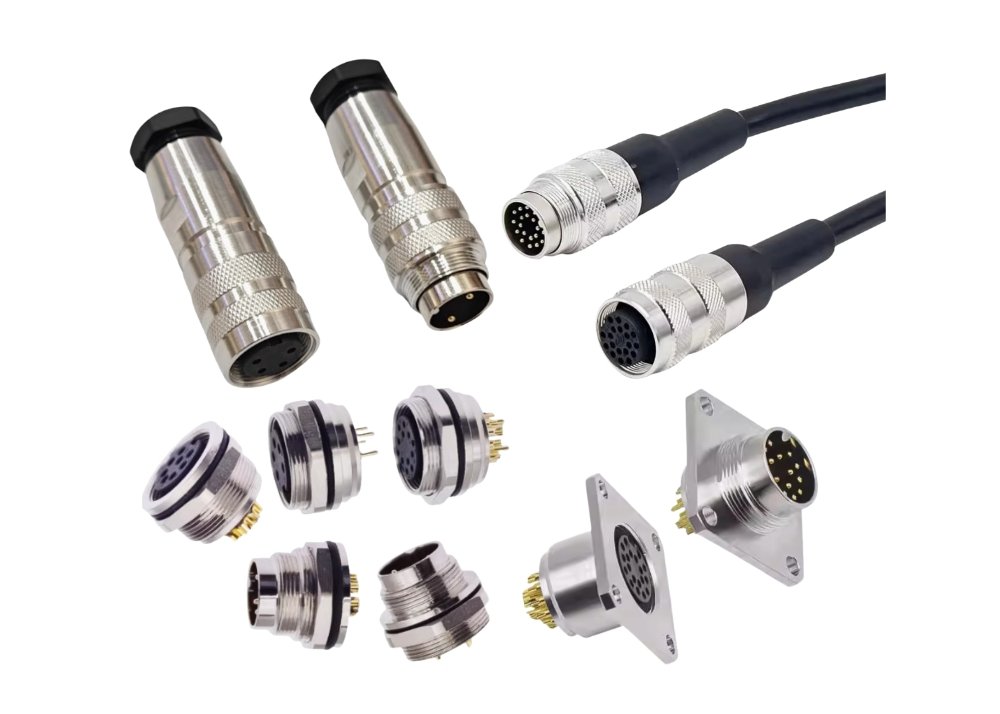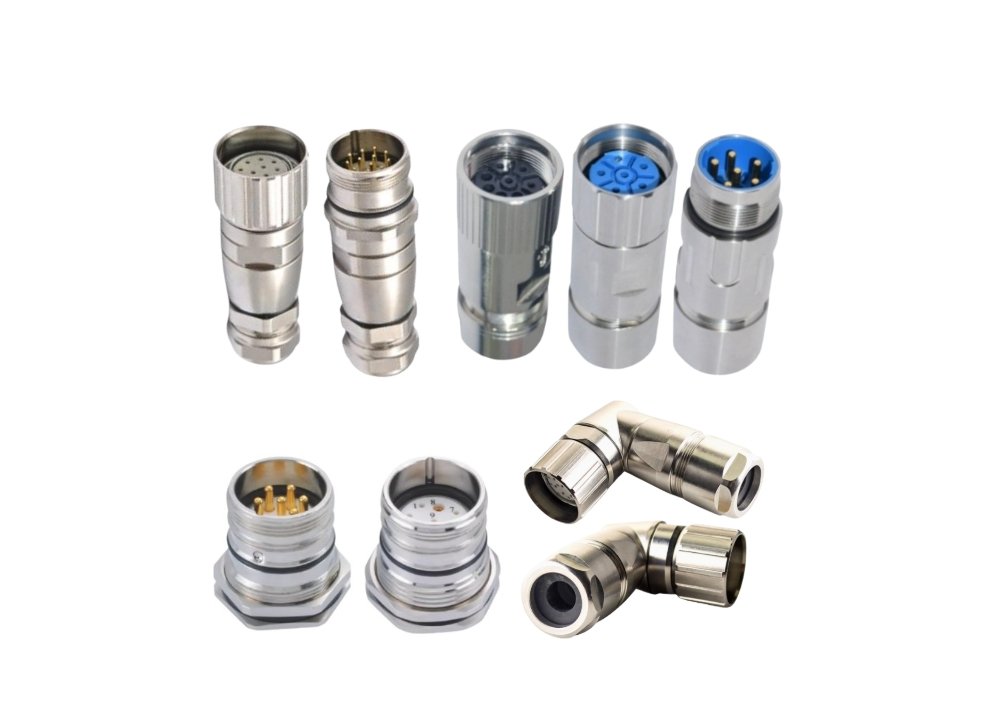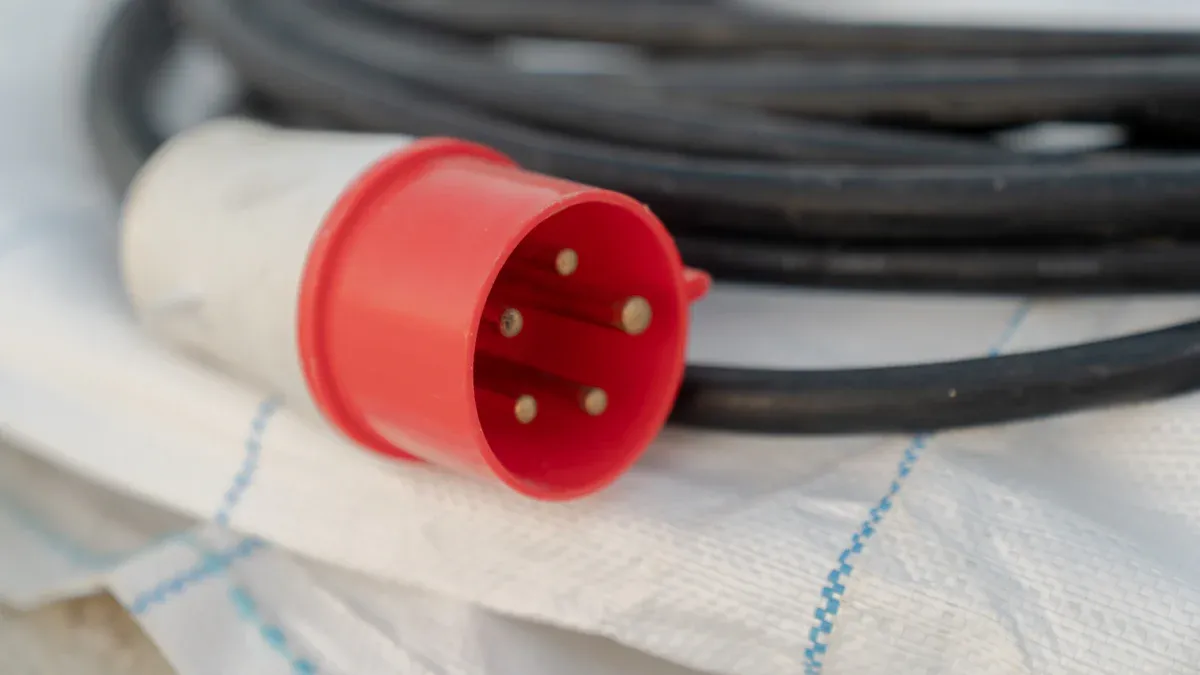
Safe installation of five-prong connectors protects you from electrical hazards and ensures lasting performance. When you select an M8 connector or a Type B connector from a reputable connector factory, you need to choose the right location, secure the cables, and maintain adequate clearance. Organize routing to avoid sharp corners and verify device compatibility for every installation. These steps help you prevent damage and keep your connectors working reliably.
| Best Practice | Description |
|---|---|
| Choose the Right Location | Avoid areas with high moisture, excessive heat, or frequent foot traffic. |
| Secure the Cables | Use brackets or ties to keep cables organized and prevent wear and tear. |
| Be Mindful of Routing | Avoid sharp corners or moving parts to prevent internal damage to cables. |
| Maintain Adequate Clearance | Ensure proper airflow around cables to prevent heat buildup. |
| Verify Device Compatibility | Check that the cord matches the equipment’s inlet and power source. |
Five-Prong Connectors: Key Safety Principles
Importance of Secure Electrical Connections
You must prioritize secure electrical connections when working with five-prong connectors. In industrial applications, a reliable connection prevents failures that can disrupt operations or cause safety risks. When you install electrical connectors, you protect sensitive equipment and maintain system integrity.
- Reliable connections reduce the risk of failures in harsh environments.
- In critical application areas like aerospace or medical devices, connector failures can lead to catastrophic results.
- Factors such as mating cycles, IP ratings, exposure to extreme temperatures, and latching mechanisms all influence connector performance.
NEMA connectors play a vital role in maintaining secure connections. You should always check the latching mechanism and ensure proper mating. When you use NEMA plugs, you create a safer environment for your application and reduce downtime.
Tip: Always inspect electrical connectors before installation. Look for signs of wear or damage to avoid future failures.
Preventing Electrical Hazards with Connectors
You can prevent electrical hazards by following key safety principles during installation. Grounding is essential for electrical safety. The ground pin in five-prong connectors makes contact first, providing a safe path for fault currents and reducing the risk of electrical shock.
- Proper grounding distributes excess charge safely and lowers the chance of electrocution or fire hazards.
- NEMA connectors are designed with safety features that protect users in demanding applications.
When you install electrical connectors, you must follow safety protocols. Always isolate power before working with connectors. Use personal protective equipment and follow manufacturer guidelines for NEMA plugs and connectors.
Note: Never work on live circuits. Isolate power and verify with a tester before handling electrical connectors.
Ensuring Long-Term Reliability
You can ensure long-term reliability by focusing on proper installation and regular maintenance. Studies show that ambient temperature and mating speed affect the performance of electrical connectors. Increased temperature reduces material strength and increases oxide film thickness, while higher mating speeds cause more wear and potential failure.
- Reliability accelerated testing reveals how connector performance evolves over time.
- Field-tested vehicles and long-term life tests provide practical insights into connector durability.
When you install five-prong connectors, you must consider environmental factors and follow recommended procedures. NEMA connectors used in industrial applications require routine inspection and cleaning to maintain optimal performance. You should use new testing methodologies to predict connector lifetime and prevent unexpected failures.
Reminder: Schedule regular inspections for all electrical connectors in your application. Clean contact surfaces and check for corrosion or damage.
Understanding Five-Prong Connectors Specifications
Electrical Requirements for Connectors
Voltage and Current Ratings
You must select five-prong connectors that match your electrical system’s voltage and current demands. In industrial and commercial applications, these connectors often support Wye-configured three-phase power. You need conductors for each phase, a neutral, and a ground.
- Many connectors, such as the Amphenol Sine Systems model, are rated for 200 to 415 V and can handle up to 32 A.
- The ground pin’s position is critical for safe operation.
- Color codes on connectors indicate voltage ratings, helping you avoid mismatches in your application.
You should always verify the ratings before installation. Using connectors outside their specified range can lead to overheating or failure.
Insulation and Protection Standards
You must ensure that electrical connectors meet insulation and protection standards. Insulation prevents accidental contact with live parts and reduces the risk of electrical shock.
- High-quality insulation materials protect against voltage surges and mechanical stress.
- NEMA connectors often feature robust insulation and housing to meet safety codes.
You should check for certifications such as UL or IEC. These certifications confirm that connectors meet industry standards for electrical safety. Always follow manufacturer guidelines for NEMA plugs and connectors to maintain compliance.
Mechanical Features of Five-Prong Connectors
Connector Materials and Durability
You need to choose connectors made from durable materials for your application. Industrial environments demand connectors that resist wear and corrosion.
- Manufacturers use materials like thermoplastics, brass, or stainless steel to enhance durability.
- You should select connectors based on your budget, expected lifespan, and environmental exposure.
Durable connectors reduce maintenance needs and extend the life of your electrical system.
Pin Configuration and Orientation
You must pay attention to pin configuration and orientation when installing five-prong connectors.
- Each pin serves a specific function: three phases, neutral, and ground.
- The ground pin’s position ensures proper safety and compatibility with NEMA connectors.
You should always align pins according to manufacturer specifications. Incorrect orientation can cause electrical faults or damage your equipment.
Environmental Considerations for Connectors
Temperature and Humidity Tolerance
You must consider environmental factors when selecting electrical connectors for your application. Extreme temperatures and humidity can affect connector performance.
- Choose connectors rated for the expected temperature range.
- Assess humidity tolerance to prevent corrosion and electrical failures.
Routine inspection helps you identify issues caused by environmental stress.
Resistance to Dust, Water, and Chemicals
You need connectors that withstand dust, water, and chemicals in demanding environments.
- Look for connectors with high IP ratings for ingress protection.
- Use rubber seals and grommets for watertight connections.
The following table summarizes key environmental considerations for five-prong connectors:
| Environmental Factor | Considerations |
|---|---|
| Application Environment | Understand the specific conditions such as extreme temperatures, water, pressure, and vibration. |
| Connector Reliability | Choose connectors rated for the expected number of mating cycles and assess temperature resistance. |
| Connector Materials | Select materials based on budget, application, and desired lifespan, considering durability needs. |
| Moisture | Ensure connectors protect against rain, humidity, and submersion. |
| Dust | Protect against dirt and debris in outdoor and industrial settings. |
| Extreme Temperatures | Consider the effects of both heat and cold on the connectors. |
| Pressure | Assess the pressure conditions in marine and aerospace applications. |
| Salinity | Choose connectors that resist corrosion from salty environments. |
| IP Rating | Determine the necessary level of ingress protection for the application. |
| Locking/Coupling | Ensure reliable mechanisms for harsh environments. |
| Housing and Insulation | Select materials that withstand operating voltages and environmental conditions. |
| Seals and Grommets | Use rubber seals for watertight connections. |
Tip: Always match connector specifications to your application’s environment. This practice helps you maintain reliable electrical connections and avoid costly downtime.
Safety Precautions Before Installing Five-Prong Connectors
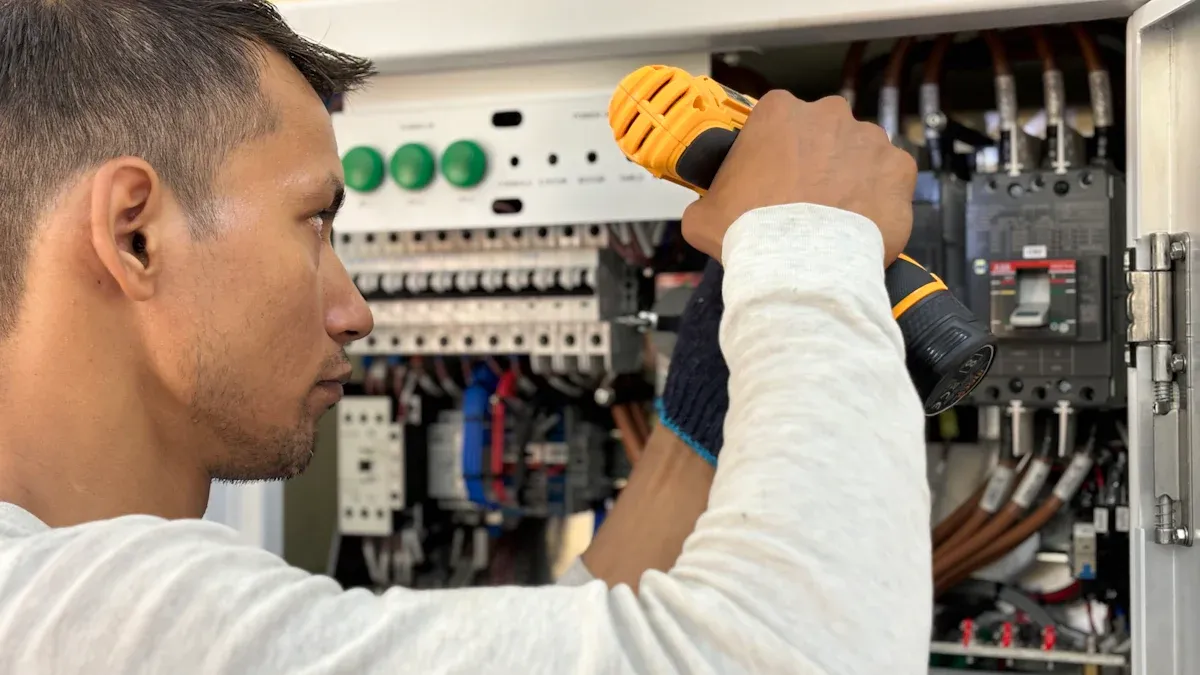
Personal Protective Equipment for Connectors
Recommended Safety Gear and ESD Protection
You must wear the right safety gear before handling electrical connectors. Use insulated gloves to protect your hands from electrical shock. Safety glasses shield your eyes from accidental sparks or debris. Anti-static wrist straps and mats prevent electrostatic discharge (ESD), which can damage sensitive connectors and electronic components. You should always ground yourself when working with NEMA connectors in any application. ESD protection is especially important in environments with delicate electrical systems.
Tip: Always check your safety gear for damage before starting work. Replace worn-out gloves or straps to maintain protection.
Electrical Safety Protocols
You need to follow strict electrical safety protocols when installing five-prong connectors. Never work on live circuits. Disconnect power sources and verify with a tester before touching any electrical connectors. Use insulated tools to reduce the risk of accidental contact with live wires. You should keep a fire extinguisher nearby in case of emergencies. NEMA plugs and connectors require careful handling to prevent electrical hazards in every application.
Preparing the Workspace for Connector Installation
Power Isolation Procedures
You must isolate power before beginning installation. Turn off circuit breakers or unplug devices to ensure no current flows through the connectors. Lockout and tagout procedures help prevent accidental re-energizing of circuits. Always confirm power isolation with a voltage tester. This step protects you and your equipment from electrical shock or damage.
Clean and Organized Work Area
A clean and organized workspace supports safe installation of electrical connectors. You should remove dust, dirt, and debris from the area. Use anti-static mats or wrist straps to protect connectors from ESD damage. Gather all necessary tools, such as tweezers, screwdrivers, or pliers, based on the connector type. An organized environment reduces the risk of losing small parts or damaging NEMA connectors during application.
- Remove dust and debris from the workspace.
- Use anti-static mats and wrist straps for ESD protection.
- Gather tools like tweezers, screwdrivers, and pliers.
- Keep connectors and components organized.
Note: A tidy workspace helps prevent mistakes and protects sensitive electrical connectors from damage.
Compliance with Industry Standards for Connectors
Relevant Regulations and Certifications
You must comply with industry standards when installing five-prong connectors. Standards ensure safety and compatibility in every application. The following table highlights key regulations for electrical connectors:
| Standard | Description |
|---|---|
| ISO 1724 | Specifies the physical design and pin layout for 5-pin connectors used in trailers. |
| 5-pin connector | Identical design to the 7-pin ISO 1724 connector, lacking pin 1 (L) and pin 4 (R). |
You should check for certifications such as UL, IEC, or ISO before using connectors in your application. These certifications confirm that NEMA connectors meet safety and performance requirements.
Following Manufacturer Guidelines
You need to follow manufacturer guidelines for every installation. Read the instructions provided with your connectors and plugs. Manufacturers specify torque settings, pin orientation, and environmental limits for NEMA connectors. Adhering to these guidelines ensures reliable performance and reduces the risk of electrical faults in your application.
Reminder: Always keep manufacturer documentation accessible during installation. Refer to it whenever you have questions about electrical connectors or procedures.
Step-by-Step Guide to Installing Five-Prong Connectors
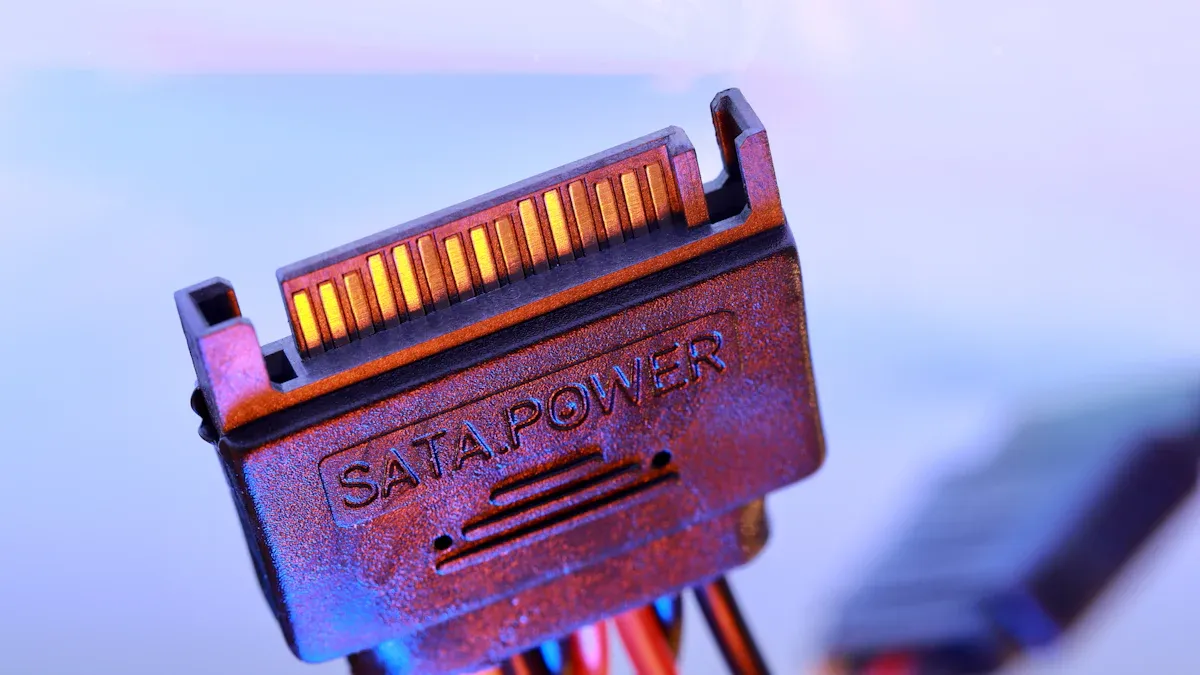
Preparation and Inspection of Connectors
Inspecting Connectors and Cables for Damage
Before you begin installation, always inspect your connectors and cables for any signs of damage. Look for cracks, discoloration, or wear on the connector housing. Examine the cable insulation for cuts or abrasions. Check that the yellow wire seals remain intact and properly seated. These seals are essential for maintaining the waterproof rating of five-prong connectors. If you notice any cracked, brittle, or dislodged seals, replace them immediately. Clean the exterior of the connectors with a damp cloth if you see dirt or grime. Avoid harsh chemicals that could degrade the plastic or rubber components. Ensure the connection feels tight and secure. A loose connection can cause intermittent electrical issues or increased resistance, which may lead to overheating.
Tip: Regular visual inspection helps you catch potential problems before they affect your application.
Verifying Compatibility and Specifications
You must verify that your connectors and cables match the requirements of your application. Start by checking the voltage and current ratings. The connector must meet or exceed the demands of your electrical system to prevent overheating or device failure. Confirm the plug type. Some applications require standard outlet plugs, while others need specialized connectors. Choose a cord length that provides enough flexibility without creating clutter. Assess the durability and build quality of the connectors. Select products that withstand the environmental conditions of your application, such as exposure to moisture or vibration. Finally, ensure the cord configuration matches the equipment’s inlet and power source. This step prevents compatibility issues and ensures safe operation.
Proper Termination Methods for Connectors
Wire Stripping and Conductor Preparation
Proper wire preparation is crucial for reliable electrical connections. Use approved wire strippers to cut the cable jacket and sheathing squarely to the correct length. Leave enough length for each conductor to reach its contact cavity. Cut the insulation progressively longer for conductors that extend from the center of the cable or harness. This approach ensures all wires fit correctly into their respective contact wells. Follow the specified cable stripping lengths for effective cable gland sealing. Lay out the wires in a practice arrangement before final assembly. Crimp and terminate each conductor carefully. Make sure all wire strands are fully bottomed in the contact wells. You can check this through the inspection hole provided on many terminals.
Note: Careful conductor preparation reduces the risk of poor contact and electrical faults in your application.
Secure Pin Connection Techniques
After preparing the wires, select the correct male or female terminal for each conductor. Use a suitable crimping tool to attach the terminal securely to the stripped wire. Ensure both the conductor and insulation are properly crimped. Slide a yellow wire seal onto each crimped wire, positioning it snugly against the insulation crimp. Insert the crimped wire with its seal into the correct cavity of the connector housing. Push until you hear or feel a click, which indicates the terminal is locked in place. Gently tug on the wire to confirm it is secure. Repeat this process for each pin. Proper pin connection techniques help maintain the integrity of your electrical connectors and prevent failures in demanding environments.
Mounting and Securing Five-Prong Connectors
Proper Alignment and Insertion
Align the male and female connector housings according to the manufacturer’s specifications. Each pin must match its corresponding cavity to ensure correct electrical contact. Insert the connectors together firmly. You should hear or feel a click, which signals a complete and secure connection. Never force the connectors if you encounter resistance. Misalignment can damage the pins or housing, leading to electrical faults or reduced reliability. Always double-check the orientation before final insertion.
Fastening and Locking Mechanisms
To prevent accidental disconnection, use the appropriate fastening and locking mechanism for your connectors. The table below summarizes common locking mechanisms and their applications:
| Locking Mechanism | Description | Applications |
|---|---|---|
| Lever locking | Uses an external clamping mechanism for robust connections. | Industrial equipment, transportation systems. |
| Push-pull locking | Inner latches retract as halves are pressed together, preventing accidental disconnection. | Medical systems, soldier-worn equipment. |
| Screw locking | Utilizes threaded couplings for improved environmental protection. | Circular and rectangular connectors. |
| Snap-in locking | Simple and compact, but with a higher risk of accidental disconnection. | Electrical test equipment. |
Select the locking mechanism that best suits your application. For industrial environments, lever or screw locking mechanisms offer enhanced security and environmental protection. Push-pull locking works well in medical or portable applications where quick connect and disconnect are necessary. Always engage the locking mechanism fully. Skipping this step can result in loose connections, which may compromise the performance of your electrical connectors and increase the risk of failure.
Reminder: Proper fastening and locking are essential for maintaining the safety and reliability of your NEMA connectors and plugs.
Final Testing and Verification of Connectors
After you complete the installation of five-prong connectors, you must verify that every connection meets safety and performance standards. Final testing ensures that your electrical connectors function reliably in any application. You protect your equipment and maintain compliance with industry requirements by following a systematic approach.
Continuity and Resistance Checks
You should begin with continuity and resistance checks. These tests confirm that your connectors provide a complete path for electrical current and that resistance remains within acceptable limits. Use a digital multimeter to measure continuity between each pin. If the meter shows a beep or a low resistance value, the circuit is complete. High resistance or no continuity indicates a poor connection or a fault in the wiring.
- Set your multimeter to the continuity mode.
- Touch the probes to corresponding pins on both sides of the connector.
- Record the resistance value for each path.
Low resistance values suggest that your electrical connectors have solid contact. High resistance may signal corrosion, loose terminals, or improper crimping. You should address these issues before using the connectors in your application.
Tip: Always test each pin individually. A single faulty connection can compromise the entire electrical system.
You can also perform mechanical integrity tests to ensure that your connectors withstand physical stress. The following table summarizes recommended pull tests for five-prong connectors:
| Test Method | Description |
|---|---|
| Pull and Break | You pull the terminal until it separates or the wire breaks. |
| Pull and Return | You pull the terminal to a specified force and then release it. |
| Pull and Hold | You pull the terminal to a specified force and hold it for a set time. |
| Pull, Hold and Break | You pull the terminal to a specified force, hold it, and then pull further until separation occurs. |
Non-destructive tests like “Pull and Return” and “Pull and Hold” help you verify that your connectors remain secure under normal operating conditions. Destructive tests such as “Pull and Break” provide data for quality assurance but are not suitable for every application.
Functional Testing Under Load
Once you confirm continuity and resistance, you must perform functional testing under load. This step verifies that your electrical connectors operate correctly when carrying actual current in your application. Connect the plugs to the power source and activate the equipment. Monitor the connectors for signs of overheating, vibration, or abnormal noise.
- Observe the connectors during startup and normal operation.
- Check for temperature rise at the contact points.
- Listen for buzzing or crackling sounds, which may indicate poor electrical contact.
You should use thermal imaging tools to detect hot spots around the connectors. Excessive heat can signal high resistance or a loose connection. If you notice any issues, disconnect the power and inspect the connectors for damage.
Note: Always follow NEMA guidelines when performing load tests. Use protective equipment and never exceed the rated current or voltage for your electrical connectors.
Functional testing under load provides confidence that your connectors will perform reliably in demanding environments. You ensure that your installation meets the requirements for industrial, commercial, or specialized applications. Regular testing and verification help you prevent unexpected failures and maintain the safety of your electrical system.
Common Mistakes to Avoid with Five-Prong Connectors
Improper Wire Preparation for Connectors
Over-stripping or Under-stripping Wires
You often encounter problems when preparing wires for five-prong connectors. Over-stripping exposes too much conductor, which increases the risk of short circuits and weakens the insulation barrier. Under-stripping leaves excess insulation, preventing proper contact with the connector terminal. Both mistakes can compromise the performance of electrical connectors in your application. Always measure and strip wires to the manufacturer’s recommended length. This practice ensures a secure fit and reliable electrical connection.
Tip: Lay out wires before final assembly and check that each conductor reaches its contact cavity without excess insulation or exposed wire.
Using Incorrect Tools for Connectors
Selecting the wrong tools for wire preparation leads to poor results. If you use generic pliers or cutters, you may damage the conductor strands or deform the insulation. Specialized wire strippers and crimping tools designed for electrical connectors help you achieve precise termination. You should always match the tool to the connector type and wire gauge. This step reduces the risk of loose connections and pin misalignment.
- Hand-tighten connectors to the specified torque.
- Clean threads and sockets before mating connectors.
- Confirm pin count and coding before making connections.
- Use vibration-resistant connectors or locking nuts in high-motion areas.
Loose or Insecure Connections
Insufficient Tightening of Connectors
Loose connections present serious hazards in any electrical application. If you fail to tighten connectors properly, you create gaps that allow arcing. Arcing generates intense heat, which can damage surrounding components and ignite flammable materials. The table below highlights the risks associated with loose or insecure connections:
| Risk | Impact |
|---|---|
| Arcing | Generates heat, increases fire risk |
| Component Damage | Heat can damage nearby electrical connectors and other parts |
| Electrical Shock | Exposed wires or conductive parts increase the likelihood of shock |
| Unstable Power Supply | Flickering, surges, or shutoffs reduce the lifespan of electronics |
You should always use the correct torque settings and verify that each connector is fully engaged. This practice protects your plugs and electrical connectors from premature failure.
Skipping Locking Steps
You may overlook locking mechanisms during installation, especially in fast-paced environments. Skipping these steps leaves connectors vulnerable to vibration and accidental disconnection. Always engage lever, screw, or push-pull locks as specified for your application. Reliable locking ensures that your electrical connectors remain secure, even in demanding conditions.
Note: Label cables and use panel-mounted connectors with gland seals to prevent contamination and maintain system integrity.
Neglecting Safety Protocols for Connectors
Working on Live Circuits
You must never work on live circuits when installing five-prong connectors. Live wires expose you to electrical shock and increase the risk of short circuits. Always isolate power and verify with a tester before handling electrical connectors. This protocol protects you and your equipment in every application.
Ignoring PPE and ESD Requirements
Personal protective equipment (PPE) and electrostatic discharge (ESD) protection are essential for safe connector installation. If you ignore these requirements, you risk damaging sensitive electrical connectors and exposing yourself to injury. Wear insulated gloves, safety glasses, and use anti-static mats or wrist straps. These steps safeguard both you and your electrical application.
Reminder: Store unused connectors with dust caps to prevent contamination and extend their lifespan.
Troubleshooting and Maintenance for Five-Prong Connectors
Identifying Connection Issues in Connectors
Signs of Poor Contact or Intermittent Failures
You may notice several symptoms when five-prong connectors develop issues. Intermittent electrical failures, such as flickering lights or equipment that powers on and off unexpectedly, often point to poor contact. You should also look for visible damage, including cracks or bent pins. A connector that feels loose or moves when you test it can signal a problem. Unusual odors or heat near the connection area may indicate overheating or arcing. These signs suggest that your electrical connectors need immediate attention to prevent further damage in your application.
Diagnosing Electrical Faults
To diagnose faults in connectors, you should use the right tools and follow a systematic approach. Start with a multimeter to check for electrical continuity across each pin. A magnifying glass helps you inspect pins for misalignment or physical damage. If you find dust or oxidation, use a contact cleaner and lint-free swabs to clean the surfaces. The table below summarizes common issues, their descriptions, and solutions:
| Issue | Description | Solution |
|---|---|---|
| Pin Misalignment | Incorrect alignment during installation can cause failures. | Align using orientation markers and light pressure during assembly. |
| Contamination | Dust or moisture interrupts signal transmission. | Clean contacts with electronic-grade cleaner and inspect regularly. |
| Broken or Damaged | Physical damage compromises functionality. | Straighten bent pins or replace connectors as specified. |
| Loose Connections | Vibration can loosen connectors over time. | Inspect for wear and reattach securely; use locking clips if needed. |
| Corrosion | Moisture exposure degrades signal quality. | Clean with contact spray and apply anti-corrosion gel; store connectors dry. |
Tip: Regular inspection and cleaning help you catch problems early and keep your NEMA connectors reliable in any application.
Routine Inspection and Cleaning of Connectors
Cleaning Contact Surfaces
You should inspect and clean the contact surfaces of your five-prong connectors regularly. Begin by examining the connector with a fiberscope or magnifying glass. If you see dirt, use a dry cleaning technique first. Inspect again, and if the connector remains dirty, repeat the dry cleaning. For stubborn debris, use a wet cleaning method followed by a dry clean. Always inspect after each cleaning step to ensure the connector is free of contaminants. This routine keeps your electrical connectors performing at their best in every application.
Checking for Wear, Corrosion, and Damage
A thorough inspection process helps you maintain connector performance. Follow these steps:
- Perform a visual inspection for wear, corrosion, or physical damage.
- Check that connectors are free from dust and contaminants.
- Measure contact resistance with a multimeter to identify wear.
- Test insertion and extraction forces to ensure connectors fit securely.
- Conduct performance tests under actual operating conditions.
- Replace any connectors showing signs of wear and set a regular inspection schedule.
Note: Consistent maintenance extends the lifespan of your NEMA connectors and reduces downtime in your electrical application.
Repair and Replacement Procedures for Connectors
Safe Removal of Faulty Five-Prong Connectors
When you need to remove a faulty connector, use the correct tools and follow safety protocols. If the connector casing is difficult to open, use a bench vise and needle-nose pliers for extra leverage. Place the handle of the plier on the closed vise, insert the tip into the casing, and roll the vise slowly to crack the shell. Finish the removal by hand, applying steady force. Avoid touching capacitor leads to prevent electric shock. Use a heavy-duty spudger to pry the connector from the shell. Always note the position of positive and negative terminals before removal.
Installing Replacement Units
For installing replacement connectors, start by removing excess solder from the board with a pump. Tin the replacement cable with solder before attaching it to the board. Carefully align the new connector, ensuring correct orientation of all terminals. Solder each pin securely and inspect your work for cold joints or bridges. Test the connector with a multimeter before returning the equipment to service. This process ensures your electrical connectors and plugs provide safe, reliable performance in every application.
You improve safety and reliability when you follow best practices for five-prong connectors. Select connectors with the correct voltage and current ratings. Place cords away from moisture and heat. Organize cables to prevent accidents. Allow airflow to avoid heat buildup. Double-check compatibility before installation. Regular inspection and maintenance help prevent electrical hazards and extend connector life. You ensure optimal performance and reduce risks by following manufacturer guidelines and industry standards.
- Regular inspections prevent accidents and optimize connector performance.
- Maintenance extends durability and provides better financial value.
FAQ
What tools do you need to install five-prong connectors?
You need wire strippers, crimping tools, screwdrivers, and a multimeter. These tools help you prepare wires, secure connections, and verify electrical performance. Always use tools designed for electrical work to ensure safety and reliability.
How do you know if a connector is compatible with your equipment?
Check the voltage and current ratings on both the connector and your device. Review the pin configuration and manufacturer specifications. Compatibility ensures safe operation and prevents damage to your equipment.
Why should you test connectors after installation?
Testing confirms that each connection works as intended. You identify issues like poor contact or high resistance before powering up your system. Use a multimeter for continuity and resistance checks.
What safety gear should you wear during installation?
Wear insulated gloves and safety glasses. Use anti-static wrist straps to prevent electrostatic discharge. Proper safety gear protects you from electrical shock and keeps sensitive components safe.
How often should you inspect and clean connectors?
Inspect and clean connectors every three to six months. Regular maintenance helps you spot wear, corrosion, or contamination early. Clean contact surfaces with approved electronic cleaners for best results.
Can you reuse connectors after removal?
You can reuse connectors if they show no signs of damage, wear, or corrosion. Inspect each connector carefully before reinstalling. Replace any connector that fails visual or electrical tests.
What should you do if a connector overheats?
Disconnect power immediately. Inspect the connector for loose wires, corrosion, or poor contact. Replace damaged parts and retest before restoring power. Overheating signals a serious issue that requires prompt attention.
Tip: Always follow manufacturer guidelines for troubleshooting and repairs.

